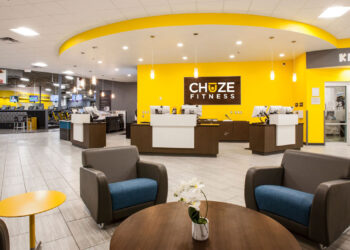Chatbot. It’s a buzzword worthy of a closer look. From the proverbial “10,000-foot view,” chatbots might be the future, but on the ground, the future is already here. Consumers are proving, in a big way, they want to do business this way. Millions of businesses are embracing the use of chat messaging to allow customers and prospects a frictionless service experience. Our industry is not just a good fit for chat messaging — in fact, health clubs and studios might just need this service the most.
We need to learn how people like to communicate with businesses and then meet them on that channel. When a prospective member visits a club’s website for the first time, there is a lot for them to consider. Not everyone is comfortable talking about their fitness needs over the phone. Consumer sentiment toward filling out a web form or emailing for answers is understandably poor at best. What about the people who want answers right now, but don’t want to talk on the phone? This only leaves one option — add chat messaging to your website — but is it that simple?
Once you have decided to go down this path, there are the mechanics to consider. For instance, who is going to manage your side of the conversation? You have four choices:
- An employee
- An automated bot
- A combination of employee and bot
- Nobody, also known as a black hole
The right answer for our industry is a mix of employee and bot, which is just a more convenient way of saying an algorithm that is programmed to conditionally respond to input from the user. For example, the user types “pricing” in the chat and the bot responds with your sales process, like showing pricing or collecting information to schedule a club tour. Bot programming can also react to menu clicks or specific words. It can even be set to proactively offer information on pre-programmed time delays. Do you have staff who answer and make phone calls at your club? If so, you might want to consider that under certain circumstances, you use that human power to engage in a live chat. Think of this as a telephone inquiry one employee can have with several people at one time from anywhere instead of just the front desk.
Platforms matter, especially when there are so many messaging applications to pick from. Facebook Messenger is already used widely for commerce. Skeptical? Consider that each month, over 800 million people use Messenger on Facebook Marketplace to buy and sell goods and services. In total, over two billion people use Messenger for a variety of reasons. Did you know that Facebook Messenger is the second most downloaded mobile app of all time? Why should you care? If a potential member starts a Messenger chat on your website, that conversation is then duplicated on both Facebook and Messenger, which means you can engage with them for hours or days after they have left your website on a platform they already find comfortable.
Be aware: Bots do require programming. Whether you use ManyChat, which is a Facebook Messenger tool, or software like ZenDesk, which is not a messenger tool, you will need someone to build out the automation. And no, artificial intelligence hasn’t figured out how to respond to your customers. Data indicates consumers are embracing chat tools with some form of automation — the question now is when will the health club industry do the same?
Stay ahead in the fitness industry with exclusive updates!
Dan Maxwell is CEO of SWETI Marketing and a Certified Messenger Marketing Expert. For more information visit swetimarketing.com.










